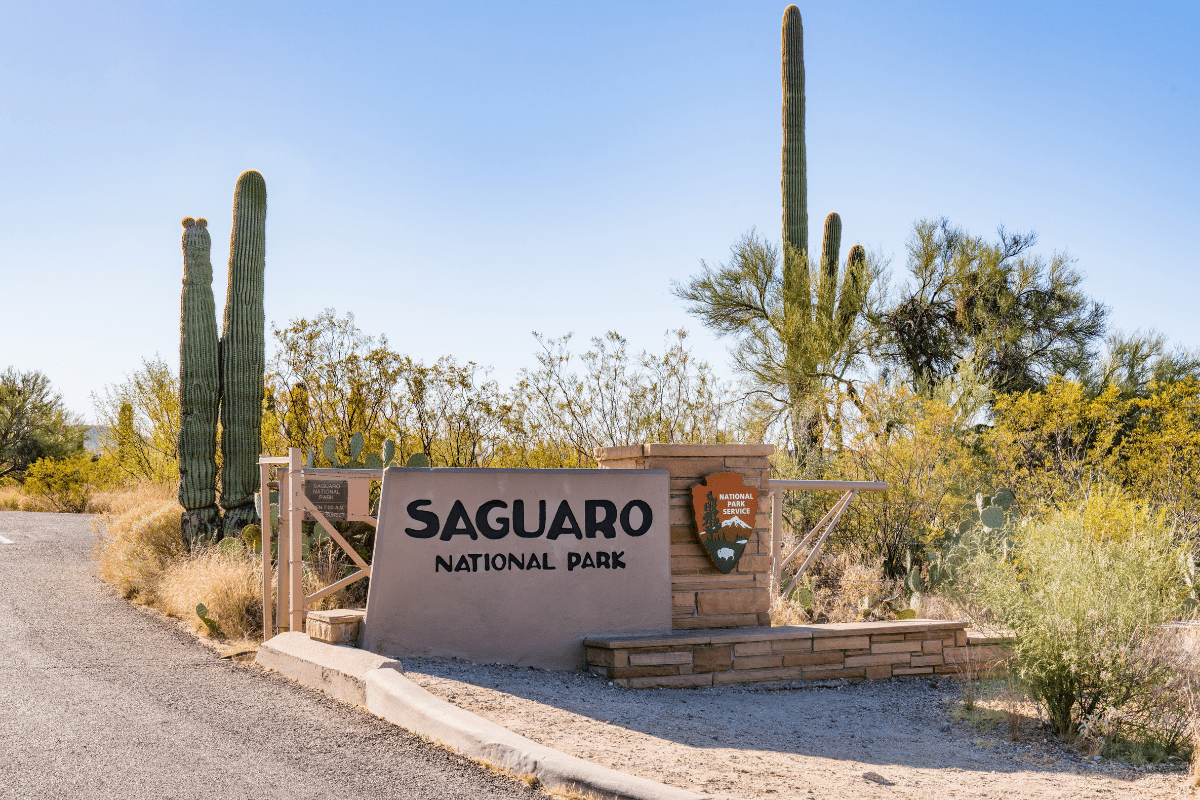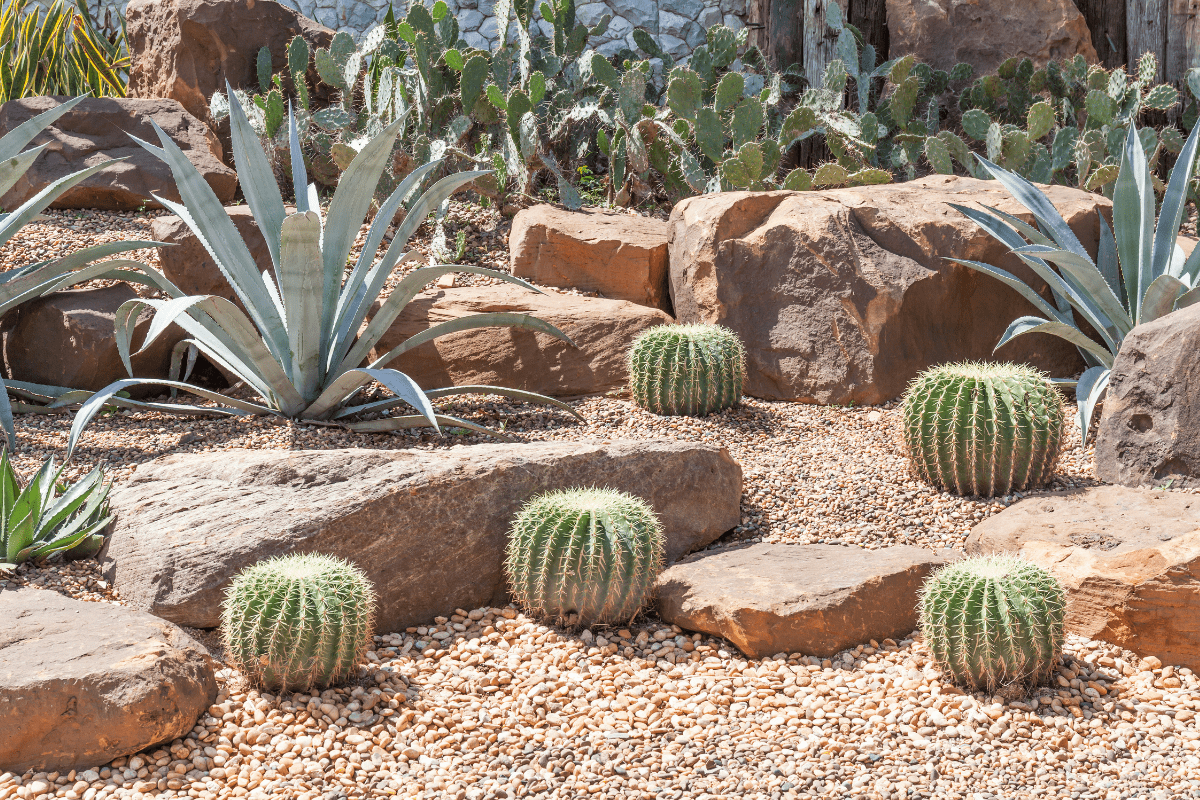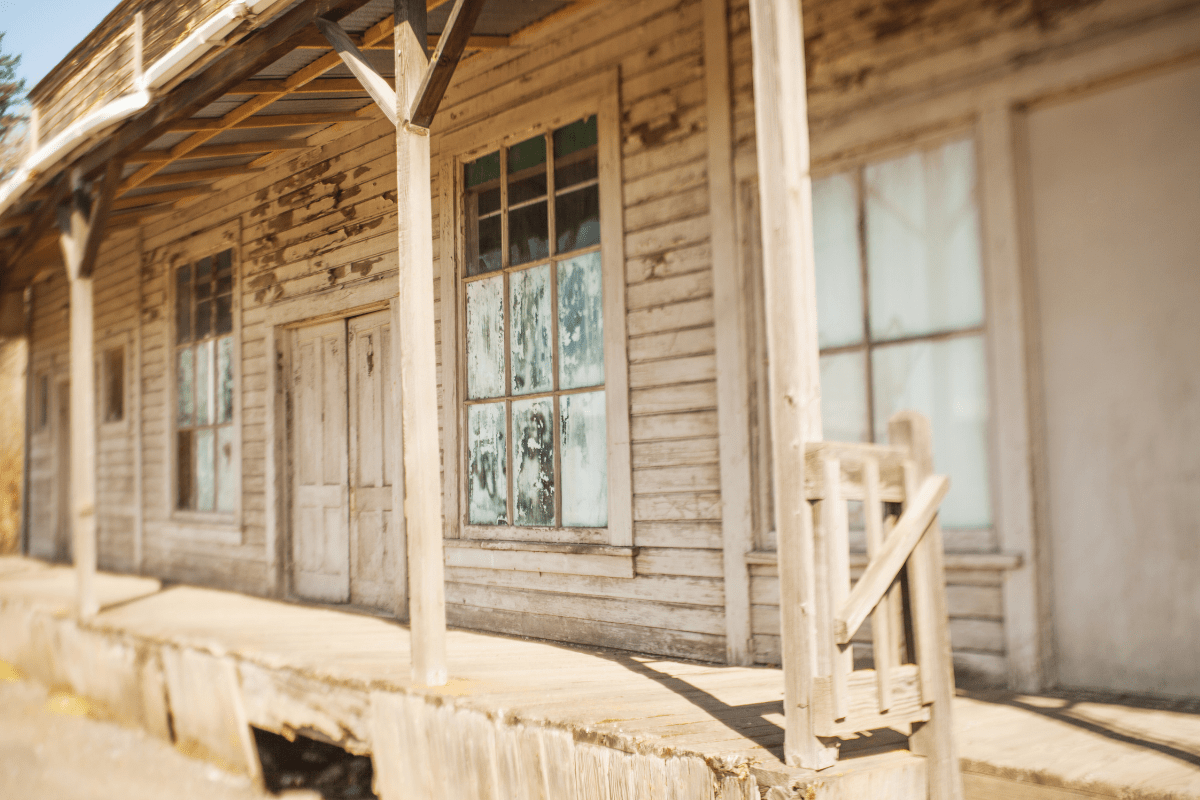Arizona’s wildlife scene is basically a real-life nature documentary waiting to happen, minus David Attenborough’s soothing narration. From roadrunners actually running down roads (yes, they really do that) to mountain lions that thankfully prefer to avoid your hiking selfies, the state offers some of North America’s most diverse and accessible wildlife viewing opportunities.
Essential Wildlife Viewing Knowledge
Before you grab your binoculars and head into the desert, let’s talk about what separates successful wildlife watchers from those who spend their day staring at empty bushes.
Best Times for Wildlife Activity
Here’s the thing about Arizona wildlife: they’re smarter than us when it comes to dealing with the heat. According to the Arizona Game & Fish Department, “Generally, more wildlife activity occurs in the first and last hours of daylight than at any other time of day.” This means if you’re rolling up to a trail at noon in July, you’re basically guaranteed to see nothing but your own sweat drops.
The seasonal patterns make a huge difference too. Spring migration from mid-April to mid-May brings over 70 neotropical bird species streaming through Arizona. Think of it as rush hour, but with feathers and significantly better attitudes. Summer monsoons (officially June 15 to September 30) create a hummingbird paradise, with some locations hosting up to 14 species during peak season in July and August.
For those of us who prefer not to melt into the desert floor, October through May offers the best conditions for desert wildlife viewing. The animals are more active, you’re less likely to need IV fluids after your hike, and everyone’s generally happier. Mountain areas open up nicely from April through October, giving you options when the valley feels like the surface of Mercury.
Safety Guidelines
Let’s address the elephant in the room… or rather, the mountain lion on the trail. While Arizona’s wildlife is generally more interested in avoiding you than posing for your Instagram, it’s crucial to know how to handle encounters.
Mountain lions deserve special attention. The Arizona Game & Fish Department offers this advice: “Stand and face the mountain lion. Make eye contact. Appear larger by raising your arms or opening your jacket”. Basically, channel your inner superhero pose. Never run (this triggers their chase instinct) and never turn your back. If you’ve ever tried to look intimidating to a house cat, same energy but with significantly higher stakes.
For all wildlife encounters, maintaining proper distance is key:
- Most wildlife: 25 yards minimum
- Predators and large animals: 100 yards
- If it changes behavior: you’re too close
- Use zoom lenses, not your feet
The National Park Service puts it perfectly: “If animals react to your presence you are too close”. This includes that adorable ground squirrel that seems super friendly. Spoiler alert: it just wants your trail mix.
Essential Equipment
The right gear can transform your wildlife viewing from “I think that brown blob might be a deer” to “Look at the intricate feather patterns on that vermilion flycatcher!”
Binoculars are your best friend in the field. The sweet spot for Arizona wildlife viewing is 10×42 magnification… powerful enough to see details but not so heavy you’ll leave them in the car. Popular models like the Nikon Monarch M7 or Vortex Viper HD offer excellent optics without requiring a second mortgage.
For photography enthusiasts, long telephoto lenses (400-600mm) are essential for capturing behavior while maintaining respectful distances. Pro tip: wrap your camera in cloth between uses because Arizona dust has a supernatural ability to find its way into every crevice of your expensive equipment.
Don’t forget the survival basics:
- Water: 1 gallon per person per day (summer)
- Sun protection: hat, sunscreen, long sleeves
- First aid kit with compression bandages
- Offline maps downloaded before you go
- Emergency communication device for backcountry
Premier Wildlife Viewing Destinations
Now that you’re prepared, let’s explore where to find Arizona’s incredible wildlife. These destinations range from world-famous parks to local secrets that even some Arizonans don’t know about.
National Parks
Arizona’s national parks offer wildlife viewing on an epic scale, though they come with epic crowds during peak season. Here’s how to make the most of these iconic destinations.
Grand Canyon National Park
The Grand Canyon isn’t just a big hole in the ground… it’s a big hole in the ground with over 400 animal species. The South Rim’s 13-mile Rim Trail and Hermit Road provide excellent wildlife viewing without requiring you to hike into the canyon itself.
Elk are the stars here, imported from Yellowstone between 1913 and 1928. These massive animals have adapted beautifully to life among the ponderosa pines. For the best elk viewing, arrive at Shoshone Point before sunrise (yes, it’s worth the early alarm) or try the South Kaibab Trail to Cedar Ridge. The elk are most active during early morning and evening hours, often grazing in meadows near the rim.
California condors, with their nine-foot wingspans, soar on thermals rising from the canyon. Desert bighorn sheep navigate impossibly steep terrain, and yes, mountain lions prowl the forests, though you’re more likely to win the lottery than see one.
The entry fee is $35 per vehicle, valid for seven days. During summer, arrive before 9 AM or after 4 PM to avoid the worst crowds and heat.
Saguaro National Park
Split into two districts flanking Tucson, Saguaro National Park protects not just the iconic cacti but also over 200 bird species that call this desert home. It’s like having two parks for the price of one, though each district charges separately.
The Rincon Mountain District’s 8-mile Cactus Forest Loop Drive offers multiple pullouts perfect for spotting javelinas. These nearsighted, pig-like creatures (they’re actually peccaries, not pigs) travel in family groups and have terrible vision but excellent hearing. Make some noise as you hike to avoid surprising them.
The Tucson Mountain District’s 5-mile Bajada Loop Drive winds through classic Sonoran Desert scenery. Time your visit for dawn or dusk to witness the changing of the guard as nocturnal animals head to bed and diurnal species clock in for their shifts. Roadrunners really do run down the roads here, cactus wrens build fortress-like nests in chollas, and great horned owls perch silently in saguaros.
Bear Canyon Trail has earned its reputation for consistent javelina sightings, though no bears have been seen here in decades (don’t worry, the name’s just confusing). The entry fee ranges from $15-25 per vehicle, valid for seven days at both districts.
Chiricahua National Monument
If Saguaro is the desert classic, Chiricahua is the biological mixing bowl where species from the Rocky Mountains and Mexico’s Sierra Madre meet for coffee. This southeastern Arizona gem recorded 27 mountain lion detections in 2021, the highest on record, though seeing one remains extremely rare.
The 8-mile Bonita Canyon Drive climbs through five different life zones, each supporting different wildlife communities. The 2.6-mile Echo Canyon Loop stands out as the monument’s premier wildlife trail. Coatis (imagine a raccoon that went to finishing school) forage in family groups, while Arizona white-tailed deer browse delicately in the understory.
Visit during spring migration (mid-April to mid-May) when neotropical species arrive from Central America. The diversity is staggering… over 300 bird species have been recorded here. Even if you’re not a birder, watching elegant trogons or painted redstarts is like seeing living jewels flit through the trees.
Hidden Local Gems
These lesser-known destinations offer spectacular wildlife viewing without the tour bus crowds. Some require advance planning, but the payoff is worth it.
Buenos Aires National Wildlife Refuge
This 117,000-acre refuge near the Mexican border protects endangered masked bobwhite quail and supports 325 documented bird species. Located along Highway 286 about 38 miles south of Three Points, it’s close enough for a day trip from Tucson but feels wonderfully remote.
The Tucson Audubon Society hosts free Saturday morning bird walks at 8 AM, where local experts share decades of accumulated knowledge. These walks are like having a wildlife viewing cheat code… the volunteers know exactly which mesquite tree hosts nesting birds and where pronghorn antelope like to graze.
The refuge offers 83 primitive camping sites at no charge, allowing you to experience the magic of desert dawns when the landscape transforms from monochrome to technicolor. Pronghorn antelope (North America’s fastest land animal) bound across grasslands while gray hawks begin their morning hunts.
San Pedro Riparian National Conservation Area
One of the Southwest’s last free-flowing rivers creates a 57,000-acre wildlife corridor supporting over 80 mammal species. The San Pedro House visitor center (coordinates: 31.5550°N, 110.0987°W) makes a perfect starting point for exploration.
This ribbon of green in the desert hosts 40% of America’s nesting gray hawk population and over 100 breeding bird species. The perennial water attracts species rarely seen elsewhere in Arizona, including yellow-billed cuckoos and Mexican spotted owls. Motion-activated cameras have even captured occasional jaguar tracks, though actually seeing one would be like finding a unicorn eating tacos.
Aravaipa Canyon Wilderness
Here’s where wildlife viewing gets exclusive. Limited to 30 people daily, Aravaipa Canyon requires advance permits but rewards visitors with pristine wilderness. Located at 32°53’49.24″N, 110°29’15.34″W, this 19,410-acre wilderness supports 238 bird species and seven native fish species in its year-round creek.
Desert bighorn sheep navigate the canyon walls like four-legged rock climbers while black bears and mountain lions patrol the mesquite bosques. The 12-mile dirt road from Highway 77 tests your vehicle’s suspension but leads to one of Arizona’s most biodiverse locations. Pro tip: stay at nearby Aravaipa Farms to maximize your limited permit time in the canyon.
Ramsey Canyon Preserve
This Nature Conservancy property earns its title as America’s hummingbird capital. Up to 14 hummingbird species visit during peak monsoon season (July-August), creating an aerial circus of iridescent colors.
Limited to 27 parking spaces daily, the preserve fills up fast during peak season. Arrive early or consider staying at adjacent Ramsey Canyon Cabins, which maintains over 90 bird feeders. Some seasoned birders argue the cabins offer better viewing than the preserve itself, plus you can watch hummingbirds while drinking your morning coffee in pajamas.
State Parks
Arizona’s state parks offer excellent wildlife viewing with generally smaller crowds than national parks. However, fees increased significantly in February 2025, now ranging from $10-30 for day use. The $200 annual pass covers up to four adults and pays for itself after about eight visits.
Picacho Peak State Park and Red Rock State Park are particularly good for javelina sightings, while Slide Rock offers riparian habitat attracting different species than typical desert parks.
Wildlife Species Guide
Understanding animal behavior dramatically improves your viewing success. Here’s what to look for and when.
Mammals
Javelinas (collared peccaries) perfectly demonstrate crepuscular behavior, meaning they’re most active at dawn and dusk. These near-sighted creatures compensate with acute hearing and communicate through grunts, woofs, and jaw pops that sound like castanets. Find them year-round at Picacho Peak and Red Rock State Parks, particularly where desert meets riparian zones.
Mountain lions represent Arizona’s apex predator. Each cat requires thousands of acres of territory and, according to Arizona Game & Fish, are “predators capable of seriously injuring or killing humans”. However, they actively avoid human contact. Sightings peak during dawn and dusk in backcountry areas.
Birds
Arizona’s bird diversity reaches absurd levels during migration. Spring peaks from mid-April to mid-May when painted buntings, varied buntings, and sulphur-bellied flycatchers stream northward. The southeastern sky islands host America’s highest hummingbird diversity, with Ramsey Canyon recording 14 species during late July monsoons.
Reptiles
Gila monsters, those beautifully patterned venomous lizards, emerge during spring mornings and late afternoons. They store fat in their tails for survival during extended underground periods. Despite their fearsome reputation, they’re docile and move with the urgency of a sloth on Ambien.
Western diamondback rattlesnakes remain active from April through October. While they feature prominently in desert nightmares, less than 1% of bites prove fatal with proper medical treatment.
Practical Planning Information
Success in wildlife viewing often comes down to logistics. Here’s what you need to know.
Seasonal Considerations
Summer 2023 set records with Phoenix enduring 55 days exceeding 110°F. This extreme heat concentrates wildlife activity into brief windows at dawn and dusk. If you’re visiting in summer, think like a vampire: avoid daylight whenever possible.
Monsoon season brings afternoon thunderstorms that trigger wildlife emergence, particularly amphibians. However, flash flood risks in slot canyons and washes require constant vigilance. That dry riverbed can become a raging torrent in minutes.
Guided Tours and Resources
Sometimes investing in local expertise pays huge dividends. WINGS Birding Tours, based in Tucson with over 50 years experience, knows every secret spot in southeastern Arizona. Individual guides like Richard Fray and Jake Thompson possess the kind of local knowledge that turns good trips into legendary ones.
Conservation and Ethics
Every wildlife viewer becomes a conservationist by default. Your park fees fund habitat protection, and following ethical viewing guidelines ensures future generations can enjoy these experiences. Practice Leave No Trace principles, never feed wildlife (yes, even that cute chipmunk), and remember that the perfect photo isn’t worth disturbing an animal.
Consider contributing to citizen science through apps like eBird and iNaturalist. Your sightings help researchers track population trends and migration patterns.
The Heart of the Matter
Wildlife viewing in Arizona isn’t about checking species off a list… it’s about those moments when time stops. Maybe it’s watching a roadrunner actually chase down a lizard, hearing elk bugle across a meadow at sunset, or catching a great horned owl’s silent flight through a saguaro forest.
Each encounter reminds us why these wild spaces deserve our respect and protection. Whether you’re exploring famous national parks or discovering hidden local gems, Arizona’s diverse ecosystems reward patient observers with experiences that stick with you long after the desert dust washes off.
Success comes from understanding animal behavior, respecting their space, and being in the right place at the right time. Armed with this knowledge and a healthy dose of patience, you’re ready to explore Arizona’s remarkable biodiversity. Just remember: the wildlife is wild for a reason, and that’s exactly what makes every sighting special.





